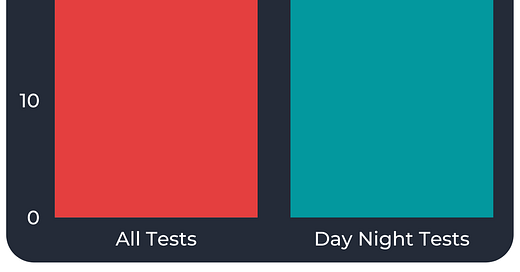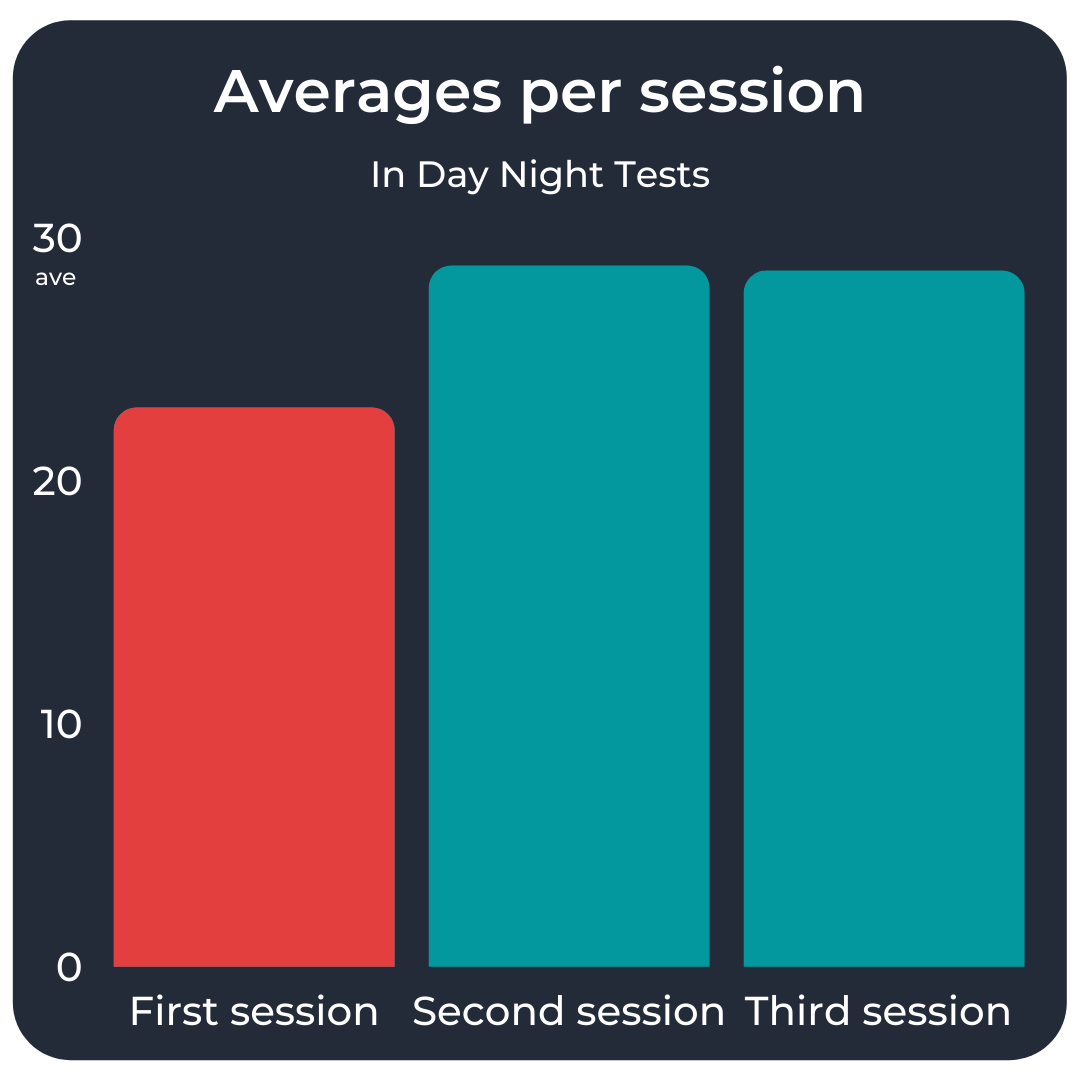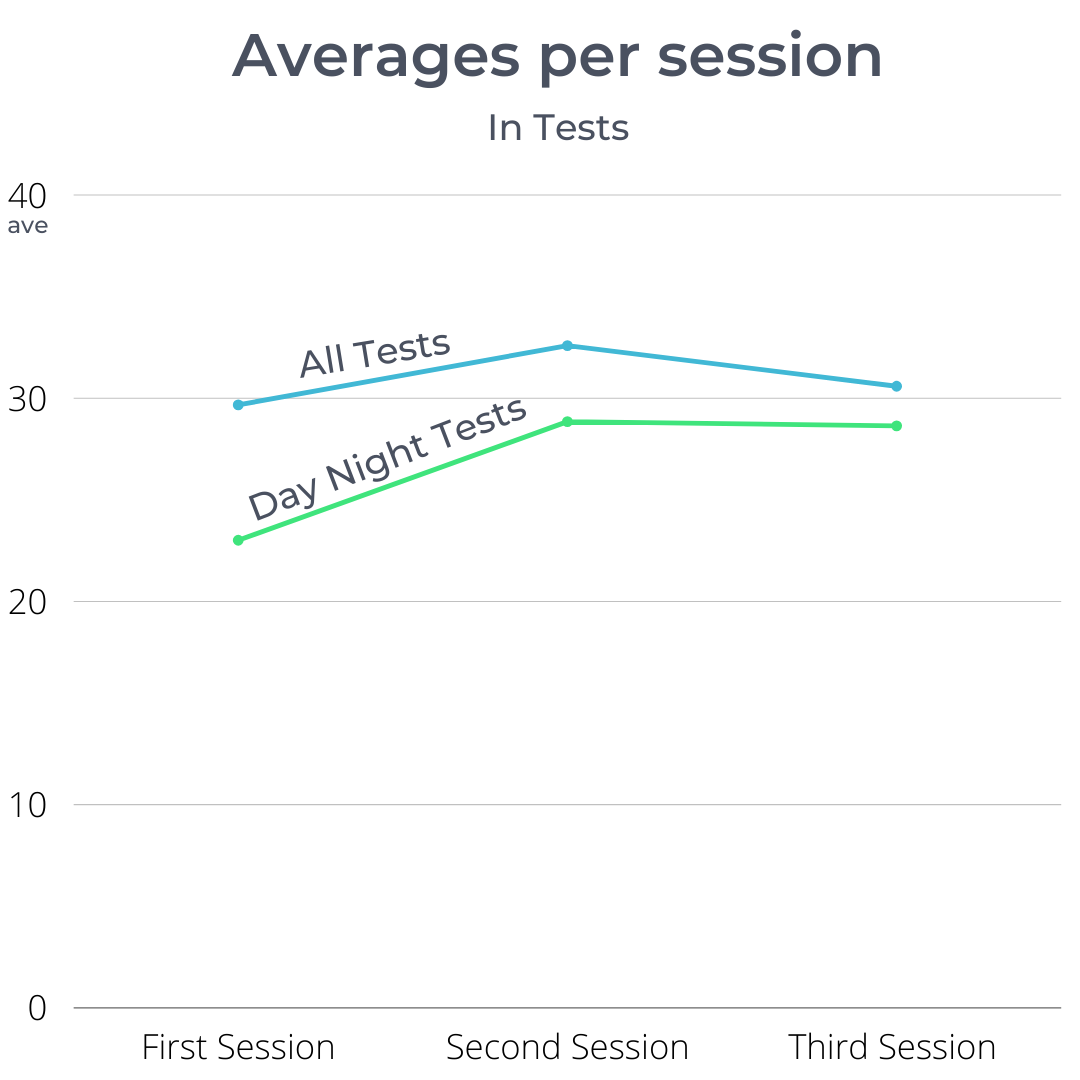Day and night; how tough is it to bat with a pink ball
Looking at why and when runs are tough in day night Tests.
Since 2015, Test matches have averaged 29.5 runs per wicket. And Day/Night Tests have been 25.24.
That is a fair drop. This leads to questions like this:
The answer to this is fairly apparent, the WACA and Galle are completely two different kinds of surfaces. The skills needed to be successful are not the same. And there are plenty of grounds like this; playing at Guyana isn’t like batting at the Basin.
This is before you even think about the history element; George Lohmann averaged 10.75 bowling on pitches with actual pieces of cow shit on them (pre-liquid manure) and matting wickets. Uncovered, covered and matting wickets were used until the 1970s. We’ve had three day through to timeless Tests. Overs have been four, five, six and eight balls long. The balls are different; throughout history other regions have had their own. England used to let you choose between two separate balls. Even now, we have three different companies making Test balls.
And perhaps the most telling thing is that we don’t have different categories for ODIs that start as day or day/night. Any statistician is used to filtering through information to find what they need. These are different kinds of Tests; we’ve had a lot of them.
We haven’t had much of is day/night Tests. So far they seem to help the bowlers, but this is only the 17th. And six of them have been at Adelaide, where the groundsmen originally admitted to leaving a lot of extra grass on to ensure the ball would last longer.
The ball is the biggest issue here; the pink ball doesn’t play like the red ball. There would have been years of research and development into getting the ball right in a perfect world. In truth, Cricket Australia, the MCC and the ICC probably shelled out less than a couple of million dollars to test this. Even though moving Tests to day/night is a billion-dollar idea.
So changing the surfaces to protect the ball is not ideal, but there are several Test venues with more than four matches in that time with a lower average per wicket than Day Night Tests. It is not impossible to bat under pink balls; in fact we’ve had two triple centuries in 17 matches.
It’s weirder because when you look at the details session by session, it’s the first session - across all five days - that has been hardest to bat in. By a long way, the first session is averaging five runs less than either of the other two sessions.
Which kind of makes a mockery of the fact that everyone wants to bowl under lights.
Six of the games haven’t had 600 runs in them. One was England match in Ahmedabad where the ball skidded very weirdly. Another was when Sri Lankan travelled to Bridgetown and both teams lost a bunch of first session wickets across different days. Zimbabwe had a double collapse at Port Elizabeth no matter when they batted. India had their 36 all out in the first session at Adelaide. Sri Lanka were skittled at the Gabba twice in the first session. And Bangaldesh were rolled cheaply twice at Eden Gardens in the first session.
The Ahmedabad was a pink ball issue, but nothing to do with lights or swing bowler. So it’s an outlier on this list. But let’s unpack the other ones; every other low scoring Test the wickets have fallen in the middle of the day (first session) with a ball everyone can see pretty well.
It’s not following cricket thinking, where you would assume moving the new ball away from the morning moisture would help the batters. But so far, the pink ball in the bright sunlight has been the trickiest thing to play.
In fact, the actual pattern is fairly similar to red ball cricket. Just the wickets fall for less. A lot less.
Taking the first session and moving it to the afternoon with added pink balls seems to make that the most difficult session to play in.
That doesn’t make much sense to me, and it certainly doesn’t fit the template of taking wickets at twilight or under lights. I wonder how much of this is just the small sample size, and the pink ball being something that moves a little bit early, before getting soft. Or, you know, teams just collapsed a lot because teams collapse a lot now.
The pink ball is hard to play at times, but so is the Dukes; two nations use that and the little fucker sometimes swings all day. The pink ball certainly doesn’t do that. But it also doesn’t rag when spinning; even the Indian anomaly was skidding that caused the problems.

I don’t know if anyone has checked if the ball is moving more under the lights, but that is not when the wickets are falling anyway. And I am with Abhishek, I find it hard to believe that the ball would swing more under lights.

Today the first ball didn’t swing at all, not to start, not under lights, not with reverse. The second new ball went a long way early that settled down. This probably has less to do with the ball under lights and just how some balls swing and others don’t.
I know from talking to players that seeing the ball can be tough at twilight, and it’s weird under lights. But most of the complaints are from the odd delivery or in the field.
And there is no doubt that pink ball day night Tests are different. But that is part of the game, arriving in parts of the world and having to deal with things you haven’t before. Sometimes the pitch will be weird, others the ball, if you’re really unlucky it is both.
We should have been playing day night Test cricket 50 years ago. We shouldn’t have only had 17 Tests of it. The pink ball, or whatever colour we settled on, should excellent by this point. At least a third of Tests should be day night.
These are the problems you get, short sample sizes, inconsistent balls and grass covering, when you have only half committed to a concept. We’re flirting with day night Tests, we’ve not even had a proper date yet. It’s certainly a long way short of a shag or taking it home to meet your mother.
After 17 Tests, there are a few weird patterns and many opinions. Which must mean this is proper Test cricket.
Have written a piece on how England. I know, right - are the most innovative team in world cricket now.
I did a good podcast with Isam on Bangladesh and hitting the ball.











Mr. Kimber, please try not to use the F Word and the S Word. These words neutralises an otherwise good analysis.